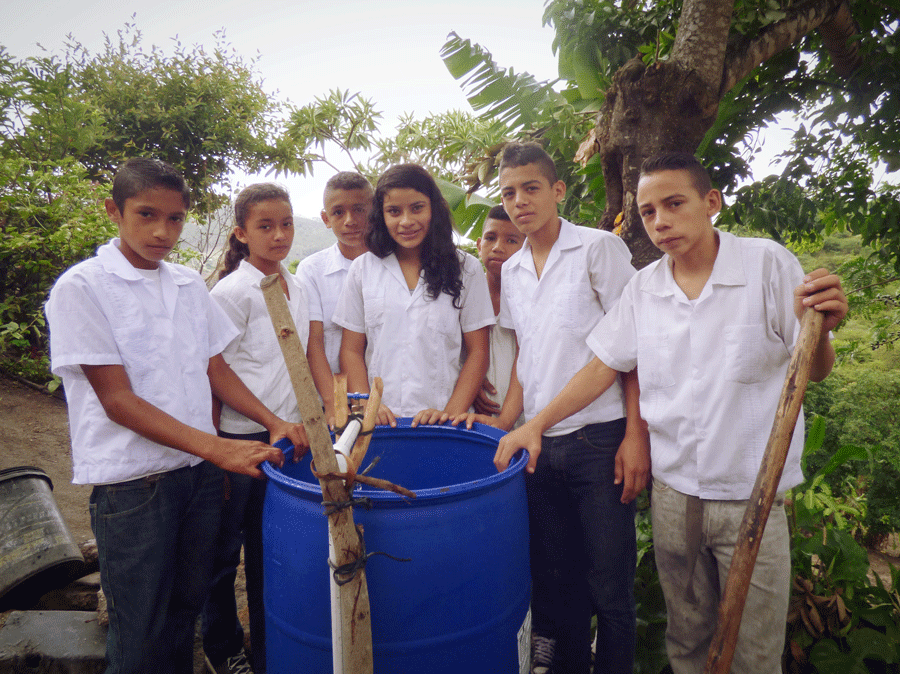Untapped Potential in Forgotten Places

Sir Ken Robinson argued in his widely-shared TED Talk “Do Schools Kill Creativity” that children have an incredible capacity for innovation and “… creativity now is as important in education as literacy.”
Where is this especially true? In the most remote corners of low-income countries, such as Honduras, where education beyond sixth grade is largely nonexistent. In most rural communities, you won’t find pictures of past graduating classes hanging on the walls for students to admire and imagine their future selves in a cap and gown. So what If you want to be the first to make the leap forward? How do you set off a chain reaction of “early adopters” intent on continuing their education? A lot of intentional innovation.
E2E looks at education through an approach we like to call “inside-out” which translates into a greater emphasis placed on what happens outside of the classroom as what occurs inside. The reason being? To build resilience and ingenuity among first-generation middle school students. If creating sustained and relevant education in low-income countries was as easy as enrolling a student in school, education inequalities would not be as rampant. But the outside environment matters.
When students leave their classroom for the day, they step back into the reality of their surroundings, face to face with the types of struggles that have kept education out of reach for their older siblings, parents, grandparents, and so on. If the saying is true that we are products of our environment, then helping students co-create the type of environment that will most support their chances of overcoming poverty and achieving their goals should be our main goal.
For the past 5 years we have tested this in Honduras. As opposed to handouts, we transfer the skills that traditionally only NGOs have possessed — designing programs, evaluating needs, monitoring and evaluation — (what could be considered their intellectual property) to students in underserved communities. As one student recounted, “We’re famous in our community. People see us as the ones who help those who need it.” When you grow up in a rural poor community, being a student should be much more than a symbol of literacy, it should also show its residents, especially the younger children, that their capabilities are far beyond what poverty dictates. They fill the vacant leadership roles that exist, as young as 7th grade, and use their newfound education to reshape their communities for the better.
To date, over 200 E2E students have spent 25,000+ hours leading projects such as elderly care programs, clean water initiatives, prevention against mosquito-borne illnesses, and more.
A “lost generation” is a real phenomenon – thousands of students who grow up in places not found on Google maps whose futures are said to predetermined just because of where they were born. Imagine an education where the graduating class photo that hangs in the hallway doesn’t only represent the educated but also the empowered; the innovators, who dared to bring change to their communities and who pay it forward in every sense of the word. This is how I view the future of rural education.
About the Author
From 2009-2011, Katia Gomez served as a District Chair for CARE USA, speaking to politicians in Washington DC and locally about the importance of empowering women and girls to conquer global poverty. After founding E2E, she was named one of the Top 12 “Amazing Young Entrepreneurs Doing Good” by Forbes. After winning the VH1 Do Something Award she was also included by Newsweek as one of the “Top 25 Women Under 25 in the World to Watch.” Katia earned her Master of Public Health from Boston University and her B.A. in International Studies from the University of California, San Diego. In 2015, she was awarded a social entrepreneurship fellowship by Ashoka.

Leave a Reply